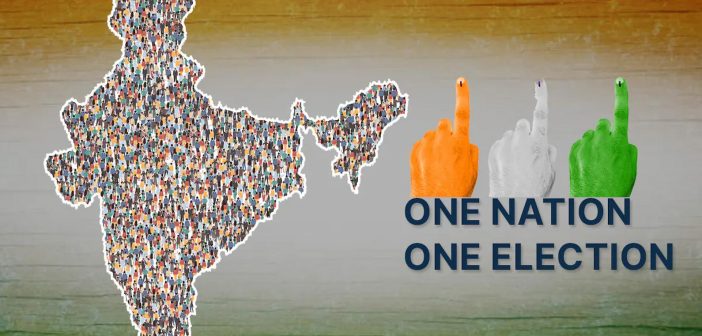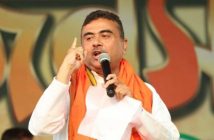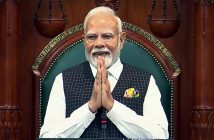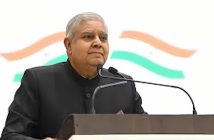At the CII Annual Session 2025, Sunil Bharti Mittal, Chairman of Bharti Enterprises, reignited the national debate on synchronized elections by urging India Inc. to champion the “One Nation, One Election” vision. Mittal argued that holding simultaneous Lok Sabha and state polls could save the exchequer billions, streamline governance, and foster economic stability. His call for the Confederation of Indian Industry (CII) to collaborate across party lines and highlight the financial benefits of electoral reform was matched by a broader push for transparent tech regulations, setting the stage for a new era in Indian governance.
Key Details
- Who: Sunil Bharti Mittal (Chairman, Bharti Enterprises), Confederation of Indian Industry (CII), industry leaders, policymakers, election experts, and political parties.
- What: Mittal’s call for CII to champion the “One Nation, One Election” model and advocate for robust tech regulations.
- When: May 2025, during the CII Annual Session.
- Where: New Delhi, attended by top business leaders, policymakers, and stakeholders.
- Why: To highlight the economic and governance benefits of synchronized elections and the need for clear regulatory frameworks for emerging technologies.
The perennial churn of India’s election cycle—where some part of the country is almost always voting—has long been a source of both democratic vibrancy and mounting administrative costs. At the Confederation of Indian Industry’s (CII) Annual Session 2025, Sunil Bharti Mittal, one of the nation’s most influential business leaders, called for a radical rethink: “One Nation, One Election.” Mittal’s address was not just a plea for electoral efficiency but a clarion call for industry to take center stage in advocating for synchronized polls, citing potential savings of billions in public funds and reduced economic disruption. He also urged the CII to drive consensus on robust regulatory frameworks for emerging technologies, such as cryptocurrency and artificial intelligence, arguing that modern governance must keep pace with India’s digital ambitions. Mittal’s vision has sparked both enthusiasm and debate, framing the next phase of India’s electoral and economic transformation.
The Background: India’s Staggered Elections and the Case for Change
India’s electoral calendar is a logistical marvel and a fiscal challenge. With 28 states and eight union territories, elections to state assemblies and the Lok Sabha are scattered across different years, resulting in a near-perpetual campaign mode. The Election Commission of India (ECI) mobilizes vast resources—police, polling staff, and security—multiple times a year. It not only strains the exchequer but also diverts administrative machinery from governance to electioneering.
The “One Nation, One Election” concept, first mooted in the 1980s and revived periodically, proposes holding all state and national elections simultaneously. Proponents argue this would cut costs, reduce policy paralysis, and foster a more stable policy environment. Critics, however, warn of constitutional, logistical, and political hurdles.
Mittal’s Argument: The Financial and Governance Imperative
Billions at Stake
Sunil Mittal’s address at the CII session was both data-driven and visionary. Citing estimates from government and independent think tanks, Mittal noted that India spends upwards of ₹60,000 crore (approx. $7.2 billion) on elections every five years—costs that multiply with staggered polls.
“The economic cost of repeated elections is staggering—not just for the exchequer, but for businesses and society at large,” Mittal said. “If we synchronize our electoral cycles, we can save thousands of crores, reduce campaign spending, and free up resources for development.”
Beyond Cost: Disruption and Policy Paralysis
Mittal also highlighted the “governance freeze” that often accompanies the Model Code of Conduct, which restricts policy announcements and new projects during elections. “Frequent elections mean frequent pauses in governance. This is not just inefficient—it’s a drag on India’s growth trajectory,” he argued.
A Call to Action for Industry
Crucially, Mittal called on CII to move beyond passive support and actively engage with all major political parties—national and regional—to build consensus and communicate the economic logic to the public. “Industry must not be a bystander. We have the data, the reach, and the credibility to drive this conversation forward,” he urged.
The Broader Vision: Tech Regulation for a Digital India
Sunil Mittal’s speech was not limited to electoral reform. He emphasized the urgent need for transparent and robust regulatory frameworks surrounding emerging technologies, particularly cryptocurrency and artificial intelligence (AI).
Cryptocurrency and AI: Opportunities and Risks
India’s digital economy is booming, but regulatory ambiguity around crypto and AI poses risks for investors and innovators alike. Mittal called for industry-government collaboration to craft clear rules that encourage innovation while protecting consumers and national interests.
“We cannot afford to lag in the global race for digital leadership. But innovation must be matched by regulation—transparent, predictable, and forward-looking,” he said.
Industry’s Role in Shaping Policy
Mittal urged CII to serve as a bridge between tech entrepreneurs, regulators, and lawmakers. “Whether it’s blockchain, AI, or fintech, the rules of the game must be clear. Industry has a responsibility to help shape these frameworks, not just react to them.”
Industry and Expert Reactions: Support, Skepticism, and Nuance
Industry Peers: Broad Support, Cautious Optimism
Many industry leaders at the CII session echoed Mittal’s sentiments. Sanjiv Bajaj, CII President, called the “One Nation, One Election” idea “visionary,” noting that “policy stability is a key ingredient for economic growth.”
Vineet Nayar, former CEO of HCL Technologies, added, “Reducing election-induced disruptions would give India’s private sector the predictability it needs to plan investments and scale operations.”
Election Experts: Practical and Constitutional Challenges
Election experts, however, pointed to significant hurdles. Dr. S.Y. Quraishi, former Chief Election Commissioner, noted, “While the financial logic is sound, the constitutional and logistical challenges are formidable. Synchronizing elections would require amendments to the Constitution, changes to state assembly tenures, and massive logistical coordination.”
Others flagged the risk of undermining federalism. “What happens if a state government falls mid-term? Will we suspend democracy to maintain the cycle?” asked political analyst Neerja Chowdhury.
Political Parties: Mixed Responses
Political parties were divided. The BJP has long supported synchronized polls, arguing it will strengthen governance. Congress and several regional parties, however, remain wary, fearing it could dilute regional issues and favor national parties.
The Ongoing Debate: India’s Electoral Future
Recent Developments
The Law Commission and Parliamentary Committees have studied the feasibility of “One Nation, One Election,” with reports highlighting both the potential benefits and the constitutional roadblocks. The government has signaled its intent to build consensus, but progress has been slow.
Global Comparisons
Countries like Sweden and South Africa hold synchronized national and local elections, offering models for India to study. However, India’s sheer size and diversity make replication a complex task.
Tech Regulation: The Next Frontier
Crypto and AI: A Regulatory Balancing Act
Mittal’s call for precise tech regulation comes as India’s crypto market surges and AI adoption accelerates. The Reserve Bank of India and the Ministry of Finance have taken cautious steps, but a comprehensive legal framework is still being developed.
Industry leaders warn that regulatory uncertainty could drive innovation offshore. “If India doesn’t provide clarity, our best startups will move to Singapore or Dubai,” said a fintech CEO at the session.
Building Trust and Transparency
Mittal’s emphasis on transparent, consultative regulation resonated with many. “We need a sandbox approach—test, learn, regulate,” said NASSCOM’s Debjani Ghosh. “But the process must be open and inclusive.”
Challenges Ahead: Legal, Logistical, and Political Hurdles
Legal and Constitutional Barriers
Implementing “One Nation, One Election” would require constitutional amendments, changes to the Representation of the People Act, and buy-in from states. Legal experts warn that aligning assembly and Lok Sabha terms could face judicial scrutiny.
Logistical Complexity
Synchronizing elections for nearly a billion voters would be a mammoth task. The Election Commission would need to scale up staffing, security, and logistics exponentially.
Political Consensus
The biggest challenge is political. Regional parties fear losing influence, and opposition parties worry about the centralization of power. Building consensus across the political spectrum will be crucial.
Tech Regulation: Keeping Pace with Innovation
Regulating fast-evolving technologies, such as cryptocurrency and artificial intelligence, is inherently challenging. Policymakers must strike a balance between innovation and risk, as well as concerns for privacy and national security, all while avoiding regulatory overreach.
Broader Implications: What This Means for India’s Growth Trajectory
Mittal’s twin calls—for synchronized elections and modern tech regulation—are rooted in a vision of efficient, transparent, and future-ready governance. If realized, these reforms could:
- Boost economic stability: Fewer election cycles mean less disruption for business and government.
- Enhance policy continuity: Governments can focus on long-term planning, not just short-term populism.
- Strengthen digital leadership: Clear tech rules can attract investment and foster innovation.
- Reinforce democratic legitimacy: If implemented with consensus and care, synchronized elections could make Indian democracy more robust.
But the road ahead is fraught with challenges. Success will require not just visionary leadership but painstaking consensus-building, legal reform, and administrative innovation.
Conclusion
Sunil Mittal’s clarion call at the CII Annual Session 2025 has injected fresh momentum into the debate over “One Nation, One Election” and the need for robust tech regulation. His arguments—rooted in economic logic and a vision for modern governance—have found resonance among industry leaders, even as experts and political actors urge caution. As India stands at the crossroads of electoral and digital transformation, the choices made now will shape not only the efficiency of its democracy but also its place in the global economy. The coming months will test the country’s ability to build consensus, innovate, and reform—hallmarks of a true 21st-century democracy.




